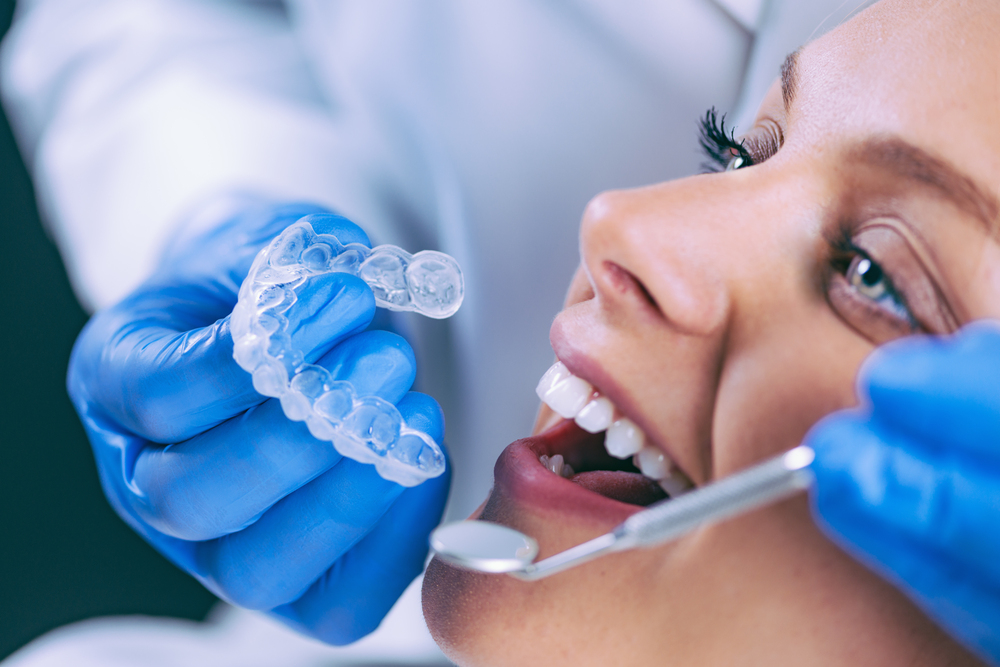Orthodontics has come a long way from its origins in “old fashioned dentistry.” While the goal of creating beautiful, functional smiles has remained constant, the methods and technologies employed have evolved dramatically. The future of orthodontics is bright, driven by innovations that not only improve treatment outcomes but also enhance patient care and experience.
The Shift from Traditional to Modern Orthodontics
Orthodontics was once a field dominated by “old fashioned dentistry,” where bulky metal braces and headgear were the norm. These devices, while effective, were often uncomfortable, unsightly, and required long treatment times. Patients endured frequent visits to the orthodontist for adjustments, and the process could take several years to complete.
In contrast, today’s orthodontics is a high-tech field that prioritizes patient comfort, aesthetics, and efficiency. Advances in digital technology, materials science, and biomechanics have transformed the landscape, making treatment faster, less invasive, and more precise. The move away from “old fashioned dentistry” is evident in every aspect of orthodontic care, from diagnosis to treatment planning and execution.
Digital Imaging and 3D Printing
One of the most significant innovations in modern orthodontics is the use of digital imaging and 3D printing. Traditional methods involved taking physical impressions of the teeth, which could be uncomfortable and prone to inaccuracies. Now, with digital scanners, orthodontists can create precise 3D models of a patient’s teeth and jaw. These models are used to plan treatment with unprecedented accuracy.
3D printing technology has further revolutionized orthodontics by allowing the creation of custom appliances, such as aligners and retainers, tailored to each patient’s unique anatomy. This technology reduces the margin of error and leads to better-fitting, more effective appliances. The ability to rapidly produce these devices also shortens treatment times, a significant improvement over the drawn-out processes of “old fashioned dentistry.”
The Rise of Clear Aligners
Clear aligners are perhaps the most well-known innovation in orthodontics, representing a significant departure from the metal braces of “old fashioned dentistry.” These transparent, removable devices have gained popularity for their aesthetic appeal and convenience. Unlike traditional braces, which are fixed to the teeth, clear aligners can be removed for eating and cleaning, making them a more hygienic option.
The development of clear aligners has been driven by advances in digital technology. Orthodontists use specialized software to map out the entire course of treatment, predicting the movement of each tooth at every stage. This allows for the production of a series of aligners, each slightly different, to gradually shift the teeth into the desired position. The result is a treatment that is not only less visible but often quicker and more comfortable than traditional braces.
AI and Machine Learning in Treatment Planning
Artificial intelligence (AI) and machine learning are beginning to play a significant role in orthodontics, promising even greater precision and customization in treatment planning. These technologies analyze vast amounts of data to predict the most effective treatment paths for individual patients. By learning from previous cases, AI can help orthodontists identify the optimal approach, reducing trial and error and enhancing outcomes.
Machine learning algorithms can also monitor a patient’s progress in real time, adjusting the treatment plan as needed. This dynamic approach ensures that the treatment remains on track, even if unexpected changes occur. The integration of AI in orthodontics marks a departure from the more rigid, one-size-fits-all approach that characterized “old fashioned dentistry.”
Patient Experience and Care
While technological advancements have transformed the tools and methods used in orthodontics, there has also been a significant shift in the focus on patient experience and care. In the past, “old fashioned dentistry” often prioritized the technical aspects of treatment, with less emphasis on the patient’s comfort and overall experience. Today, patient-centered care is at the forefront of orthodontic practice.
Orthodontists now recognize the importance of involving patients in their treatment journey. Digital tools allow patients to visualize the expected outcome of their treatment before it begins, helping them make informed decisions. This transparency fosters trust and collaboration between the patient and orthodontist.
Comfort is also a key consideration in modern orthodontics. New materials, such as shape-memory alloys used in wires and brackets, apply gentle, continuous pressure to move teeth, reducing discomfort. Clear aligners, with their smooth, plastic surfaces, are also more comfortable than the sharp edges of metal braces.
The trend towards minimally invasive procedures is another way patient care has improved. Techniques such as accelerated orthodontics, which uses devices to stimulate bone remodeling and speed up tooth movement, offer faster results with less discomfort. This focus on reducing treatment time and improving comfort is a stark contrast to the often lengthy and painful procedures associated with “old fashioned dentistry.”
The Future of Orthodontics
Looking ahead, the future of orthodontics is likely to be shaped by further integration of technology and a continued emphasis on patient-centered care. Advances in genetics and personalized medicine may one day allow orthodontists to tailor treatments based on a patient’s unique genetic profile, further enhancing outcomes.
Teleorthodontics, where patients can receive remote consultations and monitoring, is another area with great potential. This approach not only increases accessibility to care but also allows for more frequent check-ins, leading to more responsive treatment adjustments.
As orthodontics continues to evolve, the gap between modern practice and “old fashioned dentistry” will only widen. The field is moving towards a future where treatments are faster, more comfortable, and more effective, all while placing the patient at the center of care. The innovations on the horizon promise to make orthodontic treatment a more seamless and satisfying experience for patients of all ages.

